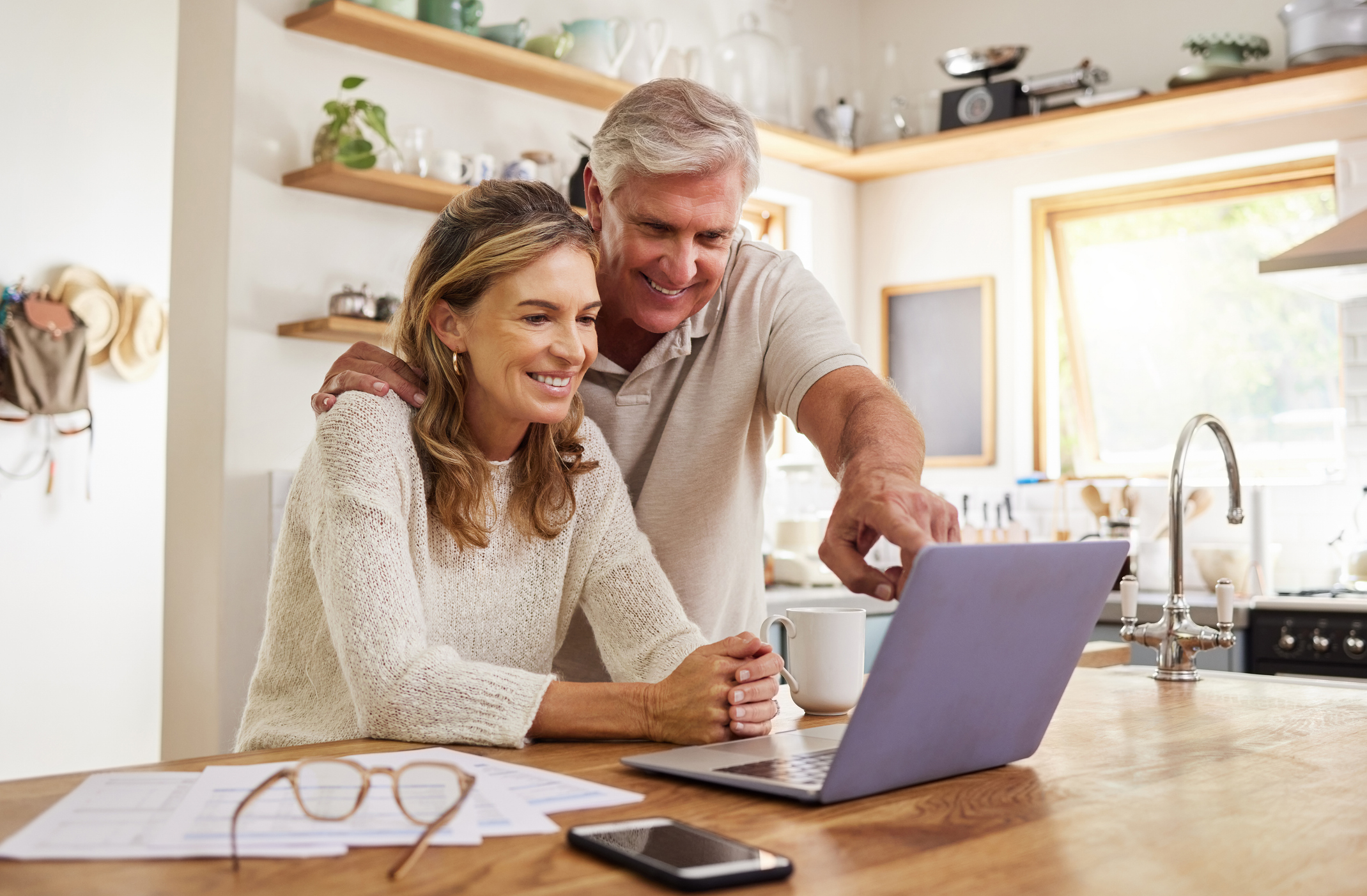Do Wildfires Have You Worried About Your Insurance Coverage? Here's What to Do
With the California wildfires causing billions of dollars in damage, now is a good time to assess your homeowner's insurance and ensure it covers disasters.

The California wildfires have caused at least 24 deaths, billions of dollars in damage and destroyed up to 12,000 homes according to CNN. They also serve as a reminder to homeowners across the country that disasters can happen at any time, and it’s vital to have the right insurance coverage to pay for perils.
That is, if you can secure coverage.
The Senate Budget committee had a series of hearings throughout 2023 on how climate change impacts the insurance market. In their December 2024 staff report, they concluded, "Climate-related extreme weather events will become both more frequent and more violent, resulting in ever-scarcer insurance and ever-higher premiums."

Sign up for Kiplinger’s Free E-Newsletters
Profit and prosper with the best of expert advice on investing, taxes, retirement, personal finance and more - straight to your e-mail.
Profit and prosper with the best of expert advice - straight to your e-mail.
Their studies also found that home insurance premiums rose 40% faster than inflation. That means being proactive in checking that your coverage is still comprehensive for your risk factors and reshopping home insurance before your policy renews are essential to keeping costs low. Consider this advice in assessing your coverage.
How homeowners insurance covers fire damage
In many areas of the country, your homeowners insurance protects your home and its contents against perils like fire. In turn, if a wildfire occurs and damages your home, you could receive compensation for those losses under different coverages in your policies.
Here’s a breakdown of what insurance covers:
- Dwelling coverage: Protects any damage incurred to your home and its attached structures, like a deck or garage.
- Personal property: Any property damaged from the fire such as clothing, electronics and furniture are usually covered. It’s ideal to take a video of your home at least once a year so you have an inventory of all items impacted.
- Additional living expenses: If your home becomes uninhabitable due to fire, your insurance policy could pay for you to rent another home while awaiting repairs completed. It can also cover hotel costs, extra gas expenses (if you commute further to work) and additional food costs.
Since policies vary by state, reading your policy documents can help you note any exclusions that apply to your coverage. You can also contact your insurance carrier to ensure you have coverage for wildfires, floods or other climate-related events.
However, if you live in an area prone to wildfires, finding coverage will be more difficult. The California Department of Insurance backs this up, reporting insurance carriers declined to renew up to 2.8 million policies between 2000 and 2022. For example, State Farm dropped 1,600 policies in the Palisades area back in July 2024, according to Euronews.
How to get insurance in risk-prone areas
If you live in an area susceptible to wildfires, obtaining insurance isn’t easy or cheap.
First, you’ll want to review your policies to see if they have exclusions for events common in your area like wildfires or floods, and if they do, shop around to see if another carrier in your area offers coverage. Keep in mind that some insurance companies might offer coverage, but the costs might make the policy financially unfeasible for many households.
Another option is to consider your state’s Fair Access to Insurance Requirements (FAIR) plan. These plans accord homeowners with coverages for wildfire, high wind events or vandalism at higher prices and lower policy limits (damages paid out) than standard homeowners policies.
Thirty-five states currently have FAIR plans in place, according to the Insurance Information Institute. The number of households having to turn to it is also increasing, with Euronews reporting 2.7 million homeowners using FAIR plans in 2023. That’s up from 1.4 million homes covered in 2020. And with severe weather events becoming more common, the safe bet is that more homeowners will move to FAIR coverages moving forward.
The bottom line
The California wildfires are a stark reminder to make sure you have the coverages you need in place, especially if you live in an area prone to wildfires or other severe weather events.
With many insurance carriers dropping coverage on account of it being too expensive, exploring other options can give you peace of mind you have the financial protection you need if the unthinkable happens. Of course, having insurance coverage will not fix the psychological impacts of a natural disaster, but at least this is preparation you can take to give yourself one less thing to worry about in case of disaster.
You can see options for home insurance rates here, with this tool:
Related content
Get Kiplinger Today newsletter — free
Profit and prosper with the best of Kiplinger's advice on investing, taxes, retirement, personal finance and much more. Delivered daily. Enter your email in the box and click Sign Me Up.

Sean is a veteran personal finance writer, with over 10 years of experience. He's written finance guides on insurance, savings, travel and more for CNET, Bankrate and GOBankingRates.
-
 Should You Do A Roth IRA Conversion? Nine Things to Consider
Should You Do A Roth IRA Conversion? Nine Things to ConsiderThe Tax Letter Thinking of converting a traditional IRA to a Roth IRA? The Kiplinger Tax Letter Editor highlights nine factors you should consider before making a move.
By Joy Taylor
-
 33 Stocks That Could Rally 50% or More This Year
33 Stocks That Could Rally 50% or More This YearAnalysts say these S&P 500 stocks have at least 50% price upside over the next year or so.
By Dan Burrows
-
 Reminder: The Basics of Using HSA Funds
Reminder: The Basics of Using HSA FundsHealth savings accounts (HSAs)can help you cover out-of-pocket medical costs. Just make sure you understand the rules and keep records of qualifying expenses.
By Ella Vincent
-
 A Checklist for High-Net-Worth Individuals: How to Protect and Grow Your Wealth
A Checklist for High-Net-Worth Individuals: How to Protect and Grow Your WealthA strategic guide to managing, preserving, and expanding your wealth for long-term financial security.
By Dori Zinn
-
 Earn a 50% Discount to The Cultivist With Capital One Venture X
Earn a 50% Discount to The Cultivist With Capital One Venture XTour some of the world's top art museums for less when you use your Capital One Venture X card to score a 50% discount to The Cultivist.
By Sean Jackson
-
 Going to College? How to Navigate the Financial Planning
Going to College? How to Navigate the Financial PlanningCollege decisions this year seem even more complex than usual, including determining whether a school is a 'financial fit.' Here's how to find your way.
By Chris Ebeling
-
 My First $1 Million: Literacy Interventionist, 59, Colorado
My First $1 Million: Literacy Interventionist, 59, ColoradoEver wonder how someone who's made a million dollars or more did it? Kiplinger's new My First $1 Million series uncovers the answers.
By Joyce Lamb
-
 Charitable Giving Lessons From Netflix's 'Apple Cider Vinegar'
Charitable Giving Lessons From Netflix's 'Apple Cider Vinegar'Charity fraud is rife, and a Netflix series provides a timely warning about donating money to a good cause without looking into its background.
By Peter J. Klein, CFA®, CAP®, CSRIC®, CRPS®
-
 Five Easy Weatherproofing Projects That Help Prevent Damage and Save on Insurance
Five Easy Weatherproofing Projects That Help Prevent Damage and Save on InsuranceProtect your home from storms and water damage with these simple weatherproofing upgrades — some may help reduce your home insurance premium.
By Paige Cerulli
-
 What Happens To Mortgage and Savings Rates If Trump Fires Jerome Powell?
What Happens To Mortgage and Savings Rates If Trump Fires Jerome Powell?President Donald Trump expressed his desire to remove Fed Chair Jerome Powell. If the president is successful, how would it impact your savings accounts?
By Sean Jackson